If you have ever experienced leg swelling or know someone who has suffered from edema, then you know how uncomfortable it can be! Leg, foot, and ankle swelling occur because of excess fluid buildup due to poor circulation. It can range from mild and painless to severe.
Healthcare providers often advise patients to use compression socks as part of a treatment regimen for swelling and edema.
What Makes Your Legs Swell? It Could Be Edema

Leg swelling happens to many people for many reasons. It can occur as a result of an injury or a medical condition. Some people, such as nurses and frequent flyers, experience swelling because of their day-to-day activities. Often, however, swelling is the result of edema.
It is important to know if edema is the cause of your swelling so you and your doctor can figure out the best treatment plan.
What Is Edema?
Edema is a blood circulation-related condition. It occurs when the legs are inflamed as a result of excess fluids filling the small spaces surrounding the tissues, and organs.
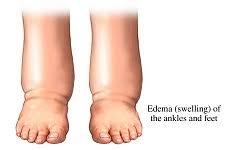
Damage to fluid-filled capillaries causes more fluid leakage body tries to compensate for the lost water. The kidneys then retain more water to balance the loss. Unfortunately, they may overcompensate.
Further fluid leakage in bodily tissues causes swelling. This is often referred to as edema.
How is this treated? Compression socks for swelling (edema) can provide almost instant relief.
When Do You Use Compression Stockings If You Have Edema?

Edema is most common in the legs, ankles, and feet.
It can occur as a result of excessive pressure exerted on the lower limbs when you stand or sit for long periods of time.
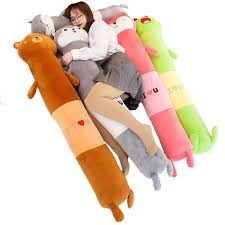
Peripheral edema is not directly linked to any specific disease and can be the result of:
pregnancy
insect bites
infections
muscle strains
If you are using compression socks to treat edema, you will need to follow the advice of your doctor.
How Compression Socks Help Alleviate the Effects of Edema
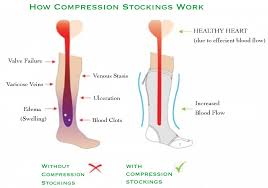
Compression gear is a common treatment for edema.
They help to prevent fluid buildup and retention, which is the main cause of the swelling.
Compression socks are designed to exert pressure on swollen legs, which improves circulation and reduces swelling. These stockings provide intense comfort and pain relief for many patients.
How Compression Socks Work to Reduce Swelling
Here is the rundown of what happens to your swollen feet when you wear compression stockings.
Compression gear is designed to exert pressure on the swollen area, which helps to gently push fluids up the limbs. The snug fit helps to balances blood flow.
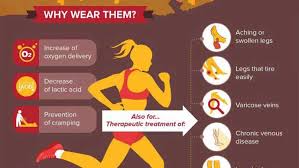
In addition to reducing swelling, compression socks also lessen the pain of edema by offering support and comfort to the affected areas.
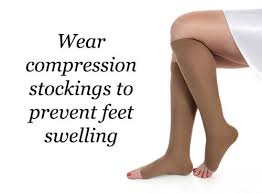
Here’s the information you’ll need from your doctor:
- advice on the swelling (edema)
- type of compression socks to wear (this depends on the severity of the swelling)
- how and when to wear the compression socks
For instance, if you suffer from peripheral edema, your doctor may advise you to use knee-high compression stockings.
Graduated stockings work best for patients who maybe be suffering from lymphoedema.

With graduated compression, the pressure is strongest at the ankle and weaker further up the leg. They help you to simultaneously move freely and get fast relief.
Though weaker compression gear is available over-the-counter, in most cases, compression therapy requires a prescription from a medical expert.
Popular Articles on ComproGear
Best Compression Socks for Elderly Socks for Elderly With Swollen Feet
How Long You Should Wear Compression Socks to Reduce the Effects of Edema
Compression stockings can be worn to prevent leg swelling after an injury or workout.
It is always a good idea, however, to seek the advice of a health care provider when figuring out how long to wear your compression socks. They will guide you based on the nature and severity of your swelling.
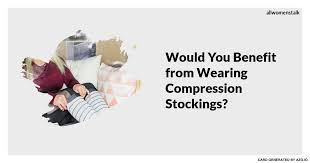
If you suffer from edema, your doctor may advise you to wear compression socks for several months.
You will need to visit your doctor regularly to check on the progress of your edema swelling. After the checkup, the doctor will advise you on whether you need to continue to wear compression stockings or not.
Some patients may use compression socks in conjunction with other treatments for swelling such as diuretics or prescription medication. Combined therapy usually works more quickly than compression gear alone.
What Might Trigger More Swelling—Even When You Put On Compression Socks?

As noted above, simple swelling can be triggered by common factors like standing or sitting for long periods, pregnancy, leg injury, or excess weight. Swelling often disappears after a few days. But edema is persistent, and it can become severe.
Here are some of the factors that could be making your edema worse.
1. Medical Conditions
Conditions such as congestive heart failure, and kidney, thyroid, liver, or lung diseases are major causes of edema because they affect circulation.
2. Medications

Blood pressure medications are known to cause body swelling. Pain relievers can also worsen edema.
If you suffer from edema, you need to talk with your doctor about any and all medications that you take regularly.
3. Pregnancy.
Pregnant women frequently experience swelling of the legs and ankles. This is caused by the excess pressure the uterus exerts on the blood vessels of the lower half of the body.

A pregnant woman who stands or sits for long hours may experience more serious edema.
4. Excessive Consumption of Salts.
Too much salt intake affects the kidneys and the amount of fluid in the body. This can worsen edema swelling, so you may need to limit your salt intake.
5. Poor Nutrition, Allergic Reactions, and Blood Clots.
All of these issues can put excess pressure on your legs and affect circulation.
6. Damaged Lymph Vessels.

When the lymph vessels can no longer function normally, lymphatic fluid accumulates, leading to infections.
In the worst cases, this can completely deform the leg.
When the lymph vessels are not working correctly, leg swelling will also increase. Schedule a check-up as soon as you suspect this may be a problem.
7. Radiotherapy.
Radiotherapy patients are at a higher risk of lymphoedema.
Those who have had lymph node removal are also predisposed to lymphoedema. If you have had radiotherapy or a lymph node removal and experience severe swelling, contact your health practitioner as soon as possible.
Are 20-30 mmHg Socks Good for Swollen Legs?

Compression wear comes in different pressure. Each is worn to help with different conditions. Always seek the advice of a medical practitioner before choosing compression socks with more than 20mmHg of pressure.
The mildest compression socks have 8-15mmHg (mild compression).
These can be obtained over the counter and are used to prevent minor swelling of the feet, ankle, and legs. They are also useful for maintaining healthy legs.
15-20 mmHg (medium compression) is appropriate for first-time wearers of compression stockings. They come in handy when experiencing leg fatigue and swollen feet, ankles, and legs. Pregnant women can use these as well as those who travel for long hours. These medium pressure socks are also useful in relieving moderate varicose veins.

20-30 mmHg (firm compression) stockings are used to treat moderate to severe edema.
Doctors may also recommend the firm compression wear even if the edema swelling is not very severe.
The high pressure is effective at regulating fluid and blood flow throughout the body, which means it significantly reduces swelling.
Firm compression stockings can help prevent orthostatic hypotension—a condition where a person standing for long hours experiences a sharp drop in blood pressure. 20-30mmHg stockings are the best for anyone suffering from this.
Make sure to look at ComproGear’s specially designed 20-30 mmHg compression socks. They are perfect for people with edema.
30-40 mmHg (extra firm compression) is used to treat severe edema and lymphedema. Severe edema requires extra pressure to normalize the blood flow in the legs and feet.
Other Ways to Reduce Swelling While Using Compression Socks
Leg and foot swelling can affect your everyday life. Imagine being unable to wear your new knee-length dress because of swollen legs, varicose veins, or edema. Or imagine that your favorite shoes don’t fit when you go to put them on!
Edema can prevent you from performing your regular duties, inhibit mobility, and cause discomfort. Fortunately, there are hundreds of ways to reduce and avoid foot swelling.
You shouldn’t worry if you notice your legs are swollen after standing for the whole day; this is a common occurrence and it can be managed easily.
Tips for Handling Swollen Legs and Feet at Home
If your work involves sitting or standing for long hours, take regular breaks by walking or changing positions to let your legs stretch. Edema decreases if there is a proper pressure distribution along with your feet and legs.
Below are some tips on how to mitigate edema at home.
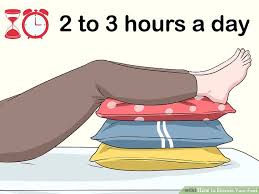
- Lie down in an elevated posture so that your swollen legs are above your chest. This balances the flow of blood and fluids.
- Eat fewer salts and carbohydrates. This will minimize fluid accumulation.
- Work with your doctor to lose excess weight
- Take short breaks to stand and move around when traveling.
- Wear loose clothes around the thighs to ensure smooth blood flow.
Is Wearing Compression Socks at Night Helpful for Relieving Edema?
Generally, it is not a good idea to wear compression socks while sleeping.
In fact, this may actually worsen swelling.
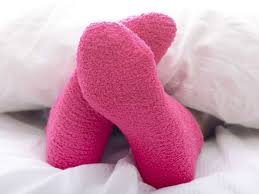
Some athletes say they wear socks to bed, but most doctors do not advise this. Remove your compression socks at night and put them on first thing in the morning. The swelling will be worse during the day when your body exerts excess pressure on your legs and feet.
If you want to wear compression socks at night, talk to your doctor first.
This page last updated December 15, 2022
